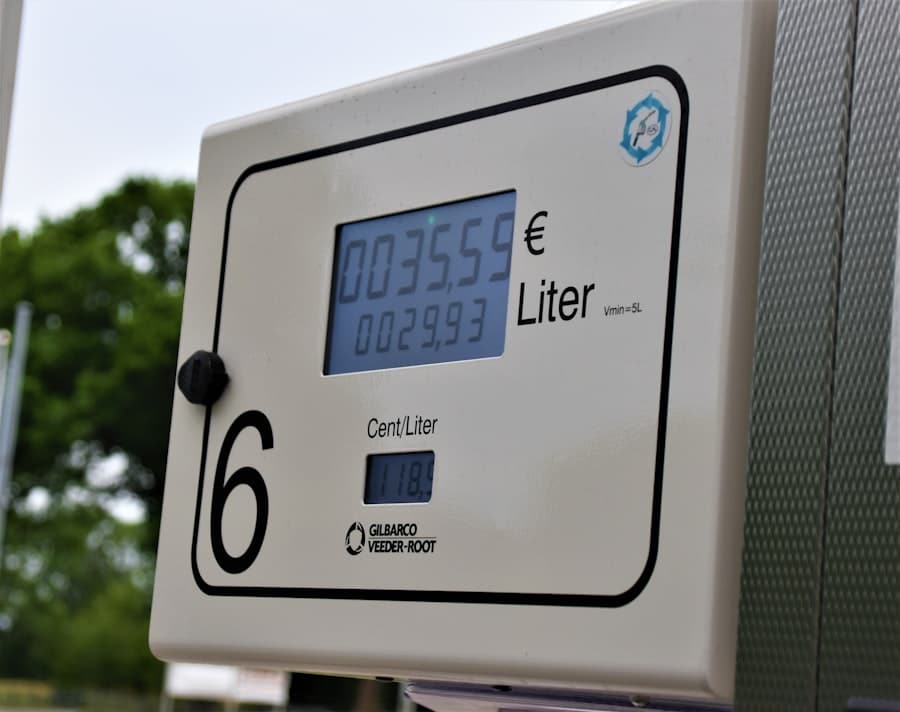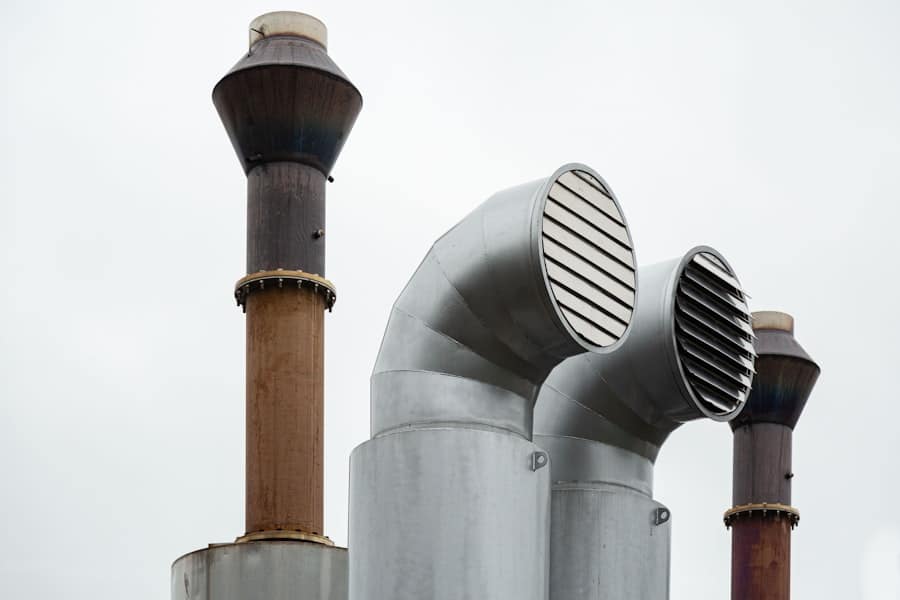Waste-to-energy (WtE) technologies represent a transformative approach to managing waste while simultaneously generating energy. This innovative process involves converting non-recyclable waste materials into usable forms of energy, such as electricity, heat, or fuel. The concept has gained traction in recent years as societies grapple with the dual challenges of increasing waste generation and the urgent need for sustainable energy solutions.
By harnessing the energy potential of waste, WtE technologies not only mitigate the environmental impact of landfills but also contribute to energy security and sustainability. The evolution of WtE technologies can be traced back to the mid-20th century when incineration began to be recognized as a viable method for waste management. Over the decades, advancements in technology have led to more efficient and cleaner processes, including anaerobic digestion, gasification, and pyrolysis.
These methods not only reduce the volume of waste but also minimize harmful emissions, making them more environmentally friendly compared to traditional waste disposal methods. As urbanization continues to rise and the global population expands, the importance of WtE technologies in addressing waste management and energy production becomes increasingly critical.
Key Takeaways
- Waste-to-Energy technologies convert waste into energy through various processes such as incineration, gasification, and anaerobic digestion.
- Waste-to-Energy plays a crucial role in circular economies by reducing the reliance on fossil fuels, minimizing landfill waste, and promoting sustainable resource management.
- The advantages of Waste-to-Energy technologies include reducing greenhouse gas emissions, generating renewable energy, and diverting waste from landfills.
- There are different types of Waste-to-Energy technologies, including mass burn incineration, refuse-derived fuel, and plasma gasification, each with its own unique process and benefits.
- Challenges in implementing Waste-to-Energy systems include public perception, technological limitations, and regulatory hurdles, but successful case studies demonstrate the potential for sustainable waste management and energy generation.
The Role of Waste-to-Energy in Circular Economies
In the context of circular economies, waste-to-energy technologies play a pivotal role by closing the loop between resource consumption and waste generation. A circular economy emphasizes the importance of reusing, recycling, and recovering materials to create a sustainable system that minimizes waste and maximizes resource efficiency. WtE technologies align seamlessly with this philosophy by transforming waste into valuable energy resources, thereby reducing reliance on fossil fuels and promoting a more sustainable energy landscape.
By viewing waste as a resource rather than a burden, communities can develop more effective strategies for waste reduction and energy recovery. For instance, municipalities can implement comprehensive waste sorting programs that facilitate the separation of organic materials for anaerobic digestion while diverting non-recyclable plastics and other materials to gasification or incineration facilities.
This holistic approach not only enhances resource recovery but also encourages public participation in sustainable practices, ultimately leading to a more resilient and environmentally conscious society.
Advantages and Benefits of Waste-to-Energy Technologies

The advantages of waste-to-energy technologies extend beyond mere waste reduction; they encompass a wide array of environmental, economic, and social benefits. One of the most significant advantages is the reduction of landfill use. Landfills are not only a source of greenhouse gas emissions but also pose risks to soil and water quality through leachate contamination.
By diverting waste from landfills and converting it into energy, WtE technologies help mitigate these environmental hazards while simultaneously generating power. Economically, WtE facilities can provide a stable source of energy that contributes to local energy grids. This is particularly important in regions where traditional energy sources are limited or unreliable.
Additionally, WtE projects can create jobs in construction, operation, and maintenance, thereby stimulating local economies. The development of WtE facilities often requires skilled labor and can lead to the establishment of new industries focused on waste management and energy recovery. Furthermore, by reducing dependence on imported fossil fuels, countries can enhance their energy security and promote energy independence.
Types of Waste-to-Energy Technologies
Waste-to-energy technologies encompass a variety of processes, each with its unique mechanisms for converting waste into energy. Incineration is perhaps the most well-known method, involving the combustion of organic materials at high temperatures to produce heat, which can then be converted into electricity through steam turbines. Modern incineration plants are equipped with advanced emission control systems that significantly reduce pollutants, making them cleaner than older facilities.
Anaerobic digestion is another prominent WtE technology that involves the breakdown of organic matter by microorganisms in the absence of oxygen. This process produces biogas, primarily composed of methane, which can be used for heating or electricity generation. Anaerobic digestion is particularly effective for managing organic waste from agricultural operations, food processing industries, and municipal solid waste.
Gasification and pyrolysis are advanced thermal processes that convert organic materials into syngas or bio-oil through partial oxidation or thermal decomposition at high temperatures. These technologies offer greater flexibility in feedstock types and can handle a wider range of materials compared to traditional incineration. The syngas produced can be further processed into fuels or chemicals, providing additional value beyond electricity generation.
Challenges and Considerations in Implementing Waste-to-Energy Systems
Despite the numerous benefits associated with waste-to-energy technologies, several challenges must be addressed to ensure their successful implementation. One significant concern is public perception and acceptance. Many communities are wary of WtE facilities due to fears about air pollution, odor, and potential health risks.
Effective communication and community engagement are essential to address these concerns and build trust among stakeholders. Another challenge lies in the economic viability of WtE projects. The initial capital investment required for constructing WtE facilities can be substantial, often necessitating public-private partnerships or government support.
Additionally, fluctuating market conditions for energy prices and waste management services can impact the financial sustainability of these projects. Policymakers must create supportive regulatory frameworks that incentivize investment in WtE technologies while ensuring that they remain economically competitive with other energy sources.
Case Studies of Successful Waste-to-Energy Projects

Several successful case studies illustrate the potential of waste-to-energy technologies in practice. One notable example is the Spittelau Waste Incineration Plant in Vienna, Austria. This facility not only processes municipal solid waste but also serves as a district heating plant, providing heat to thousands of homes in the city.
The plant employs advanced emission control technologies that have significantly reduced pollutants while generating renewable energy from waste. In Sweden, the Kungsängen Waste-to-Energy Plant exemplifies how WtE can be integrated into a broader circular economy framework. This facility processes approximately 300,000 tons of waste annually and produces both electricity and district heating for nearby communities.
Sweden’s commitment to recycling and waste reduction has allowed it to achieve high diversion rates from landfills while relying on WtE as a key component of its energy strategy. Another compelling case is found in San Diego, California, where the City’s Anaerobic Digestion Facility processes organic waste from municipal sources and food businesses. This facility converts organic materials into biogas that powers a combined heat and power (CHP) system, generating renewable electricity while reducing greenhouse gas emissions associated with landfilling organic waste.
Policy and Regulatory Framework for Waste-to-Energy in Circular Economies
The successful implementation of waste-to-energy technologies is heavily influenced by policy and regulatory frameworks at local, national, and international levels. Governments play a crucial role in establishing guidelines that promote sustainable waste management practices while encouraging investment in WtE projects. Policies that prioritize recycling and resource recovery can create an enabling environment for WtE technologies to thrive.
In many regions, feed-in tariffs or renewable energy credits incentivize the generation of energy from waste sources by guaranteeing fixed payments for electricity produced from WtE facilities. Such policies not only enhance the financial viability of these projects but also align with broader climate goals by promoting renewable energy generation. Additionally, regulations governing emissions standards ensure that WtE facilities operate within acceptable environmental limits, addressing public concerns about air quality.
International agreements such as the Paris Agreement further underscore the importance of transitioning to sustainable energy systems that include WtE as a viable option for reducing greenhouse gas emissions. By fostering collaboration among nations and sharing best practices for implementing WtE technologies, policymakers can accelerate progress toward achieving global sustainability targets.
Future Trends and Innovations in Waste-to-Energy Technologies
As technology continues to advance, the future of waste-to-energy holds exciting possibilities for innovation and improvement. One emerging trend is the integration of artificial intelligence (AI) and machine learning into WtE operations. These technologies can optimize waste sorting processes, enhance operational efficiency, and improve predictive maintenance for equipment used in WtE facilities.
Moreover, research into advanced materials for gasification and pyrolysis is paving the way for more efficient conversion processes that can handle diverse feedstocks with minimal pre-treatment requirements. Innovations in carbon capture and storage (CCS) technologies may also play a crucial role in mitigating emissions from WtE facilities, further enhancing their environmental performance. The growing emphasis on decentralized energy systems presents another opportunity for WtE technologies to flourish.
Small-scale WtE solutions can be implemented at community levels or within industrial settings, allowing localized energy production while reducing transportation costs associated with waste disposal. This decentralized approach aligns with the principles of circular economies by promoting local resource recovery and minimizing environmental impacts associated with long-distance waste transport. In conclusion, as societies continue to seek sustainable solutions for managing waste and generating energy, waste-to-energy technologies will undoubtedly play an increasingly vital role in shaping our future energy landscape while contributing to circular economies worldwide.
In the context of advancing sustainable practices, waste-to-energy technologies play a crucial role in supporting circular economies by converting waste materials into valuable energy resources. This approach not only reduces landfill waste but also contributes to energy production, aligning with the principles of a circular economy. For those interested in broader trends that are shaping the future, including sustainability and technological advancements, you might find the article on predicted trends for 2023 insightful. It explores various innovations and shifts expected to influence industries and economies, providing a comprehensive view of the upcoming changes that could further support circular economic models.
FAQs
What is waste-to-energy technology?
Waste-to-energy technology refers to the process of generating energy in the form of electricity or heat from the primary treatment of waste. This can include various methods such as incineration, gasification, and anaerobic digestion.
How do waste-to-energy technologies support circular economies?
Waste-to-energy technologies support circular economies by diverting waste from landfills and incineration, reducing the reliance on fossil fuels for energy production, and promoting the recovery of resources from waste materials. This helps to close the loop on the production and consumption cycle, contributing to a more sustainable and efficient use of resources.
What are the environmental benefits of waste-to-energy technologies?
Waste-to-energy technologies can help reduce greenhouse gas emissions by capturing and utilizing methane from organic waste, as well as displacing the need for fossil fuel-based energy production. Additionally, these technologies can help minimize the environmental impact of waste disposal by reducing the volume of waste sent to landfills and incinerators.
Are there any challenges associated with waste-to-energy technologies?
Challenges associated with waste-to-energy technologies include concerns about air emissions from the combustion of waste, the potential for toxic byproducts, and the need for proper waste management practices to ensure the efficient and safe operation of these facilities. Additionally, there may be public perception and regulatory hurdles to overcome in implementing these technologies.

